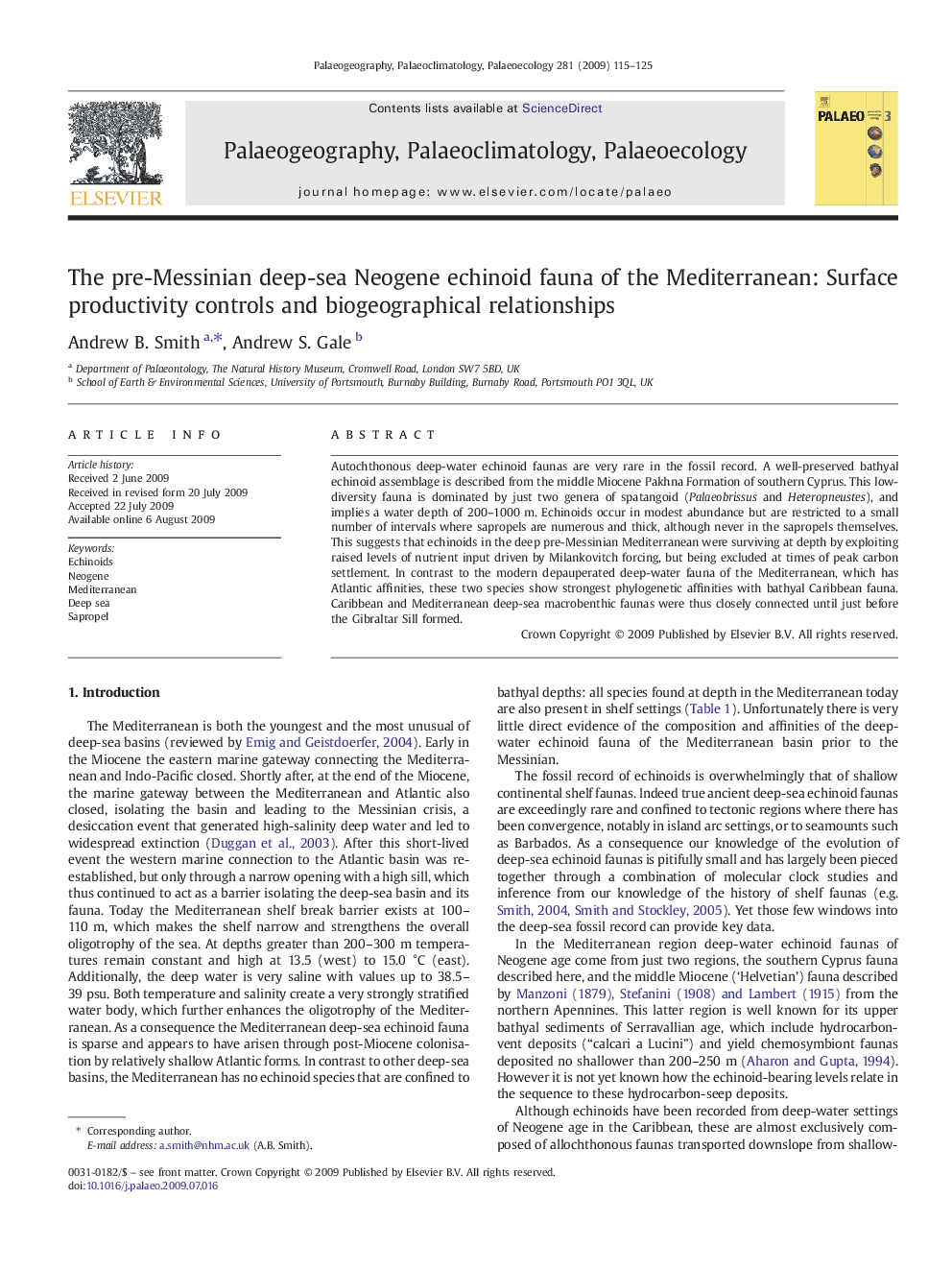| Article ID | Journal | Published Year | Pages | File Type |
|---|---|---|---|---|
| 4468022 | Palaeogeography, Palaeoclimatology, Palaeoecology | 2009 | 11 Pages |
Autochthonous deep-water echinoid faunas are very rare in the fossil record. A well-preserved bathyal echinoid assemblage is described from the middle Miocene Pakhna Formation of southern Cyprus. This low-diversity fauna is dominated by just two genera of spatangoid (Palaeobrissus and Heteropneustes), and implies a water depth of 200–1000 m. Echinoids occur in modest abundance but are restricted to a small number of intervals where sapropels are numerous and thick, although never in the sapropels themselves. This suggests that echinoids in the deep pre-Messinian Mediterranean were surviving at depth by exploiting raised levels of nutrient input driven by Milankovitch forcing, but being excluded at times of peak carbon settlement. In contrast to the modern depauperated deep-water fauna of the Mediterranean, which has Atlantic affinities, these two species show strongest phylogenetic affinities with bathyal Caribbean fauna. Caribbean and Mediterranean deep-sea macrobenthic faunas were thus closely connected until just before the Gibraltar Sill formed.
